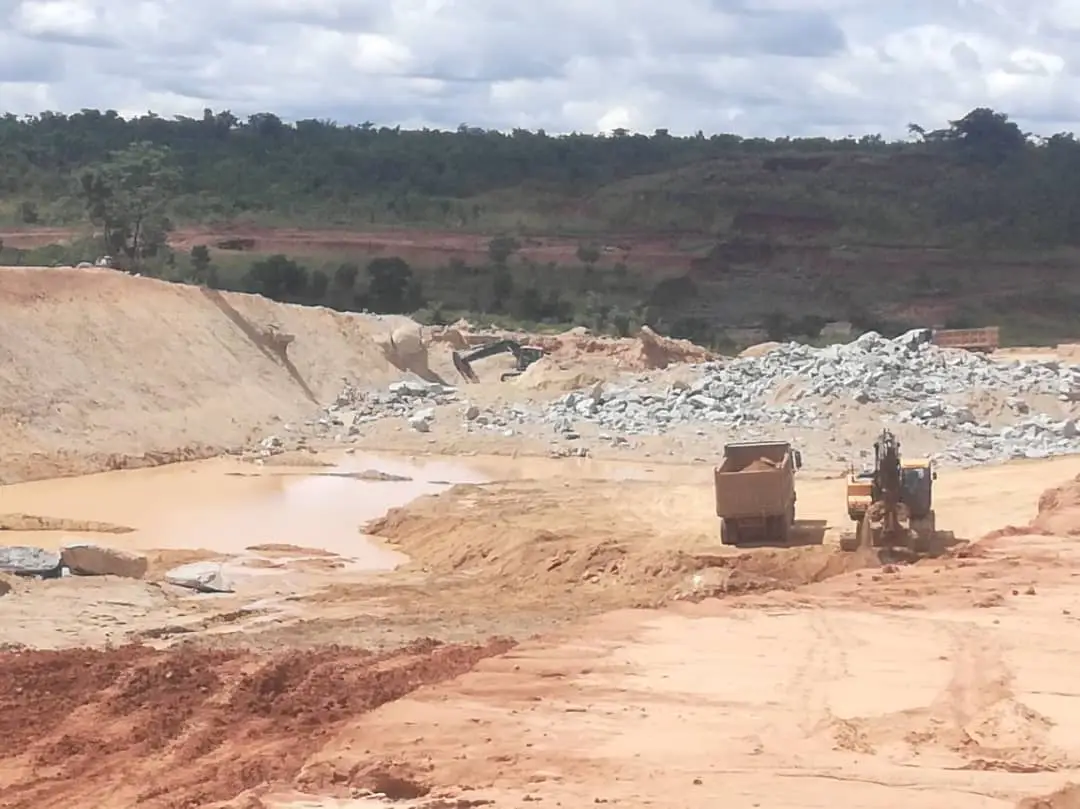Zim’s stalled engine: Manufacturing sector shrinks despite potential
Despite its advantageous position alongside established value chains in agriculture, mining, and retail, Zimbabwe’s manufacturing sector has consistently underperformed in its contribution to the national Gross Domestic Product (GDP).
GDP is a monetary measure of the market value of all the final goods and services produced and rendered in a specific time period by a country or countries and is often used to measure the economic health of a country or region.
While the economy has recorded growth in agriculture, mining and the wholesale and retail sector, the manufacturing sector has been on a downward trajectory. Its contribution to GDP has fallen from more than 15 percent in 2017 to 11,2 percent in 2022.
This underperformance stands in stark contrast to the potential this sector holds. Experts say a robust manufacturing base is a cornerstone of any thriving economy, driving exports, productivity, job creation, and overall wealth generation. But this has not been the case in Zimbabwe.
The 2023 Confederation of Zimbabwe Industries (CZI) Manufacturing Sector Survey revealed that capacity utilisation in the sector fell by 2,9 percentage points to 53,2 percent in 2023 from 56,1 percent the previous year, primarily as a result of economic headwinds and a highly regulated environment.
Industry and Commerce Minister Mangaliso Ndhlovu said there are a lot of issues to be addressed for the industrial sector to really achieve its growth potential.
“We are proposing that we have a transitional plan, which we call the reconstruction and growth plan, that will complete the tenure of National Development Strategy 1 (NDS1) so that we launch our Industrial Development Policy aligned with NDS2.
“But in the interim, we have identified a number of issues that need to be addressed for the sector to achieve its full potential under NDS2. Our ease and cost of doing business are major issues that we have to look at, as well as funding,” he said in an interview.
The Minister noted that manufacturing alone is around US$4 billion and the Government is targeting increasing it to between US$10 and US$12 billion.
“We will have an exercise where we identify specific sectors that we think can give us a value of US$1 billion or more and we say how do we protect and promote these sectors.
“We cannot be competitive in every sector. But I think in agriculture and mining-based economies, which value chain can give us the best? For instance, we have heard the Minister of Lands, Agriculture, Fisheries and Rural Development say that tobacco alone can give us upwards of US$7 billion if its value addition is given serious attention.
“So we will be identifying at least 10 and 12 value chains or subsectors that we know can potentially give us US$10 billion, so it is an exercise that we will now be looking at as we implement the transition (plan),” he said.
Minister Mangaliso said as he has been consulting, the impression is that there are a number of issues that need to be coordinated to consolidate before coming up with an Industrial Development Policy (IDP) that will power the sector to the high growth levels that we envisage.
The Government is working on NDS2 (2026–2030), a successor to NDS1 (2021–2025), which envisages economic stability and growth rates above 5 percent in order to achieve the Vision 2030 objectives.
Confederation of Zimbabwe Industries (CZI) president Kurai Matcheza told Business Weekly that manufacturing has been going down as a result of a number of issues, such as limited foreign currency availability.
This is at a time 52 percent of raw materials used in the sector are imported hence requiring adequate foreign currency.
“We have also been hit harder by issues such as electricity shortages, among other issues, but we are engaging with each other and the authorities to try and address the trend in the manufacturing sector,” he said.
“We are import-dependent as a country. If you look at what has been happening in the leather industry that you talk about in terms of hide availability and hide quality, that kind of thing isn’t there or going to be the best in Zimbabwe because of other structural issues.
“So some of those issues are obviously localising the value chain; it requires a lot of pulling and effort,” said Matsheza.
Industry players believe that manufacturing can be driven by reducing the cost of compliance burden, a policy drive on structural transformation as per NDS1, as well as an exchange rate and price stability. Part of the CZI survey revealed that regulatory charges account for an average 17,9 percent of total overheads.
Buy Zimbabwe, which promotes, deepens, and broadens the utilisation of locally sourced and produced resources to yield quality and globally competitive Zimbabwean brands for sustainable economic growth, has also been pushing its own initiatives to promote local industry.
Buy Zimbabwe General Manager Alois Burutsa told Business Weekly that it is working with the Ministry of Industry and Commerce and the Procurement Regulatory Authority (PRAZ) to come up with a local content rating and certification.
He said this will ensure that local companies benefit from Government tenders.
“Local companies get certain advantages or certain benefits; for instance, up to 300 000 Government tenders are supposed to be reserved for locals, and there is also a 20 percent price advantage.
“This will force people to start manufacturing, benefiting from Government tenders,” he said.
He added that Buy Zimbabwe is also working with the national local content steering committee to ensure that any company using 50 percent local content can benefit from the Government.
“By using high local content, they are contributing to the economy, they are employing more people, and they are supporting the economy, and we feel that companies can be rewarded for doing that.,” he said.
Burutsa said Buy Zimbabwe is also constantly engaging with the Government and other stakeholders to address the cost and ease of doing business.
“At the moment, as a country, we are not, especially as far as manufacturing is concerned. There is nothing favourable to our manufacturing. Our manufacturers are in a very difficult position at this particular moment.
“Even in terms of contribution to GDP, the manufacturing sector has been lagging behind agriculture, mining, and retail, but it is a key sector that could actually drive the economy,” said Burutsa.
He added that the manufacturing sector is key because it is not only a key pillar of the economy’s import substitution strategy.
Burutsa said almost 80 percent of the country’s mineral exports are from mining, all of which are exported as raw minerals, as there is no value addition.
“But then, when we talk of value addition, you then need to have a good manufacturing base. So we need to have the conversation whereby they are saying we should deliver it on our mining.
“The miners’ role is to extract the minerals from the ground. Once the minerals are out, the manufacturer is supposed to then pick up those minerals and go with them to get them value added and exported,” said Burutsa.
Economist Eddie Cross said the country has signed up for the African Free Trade Area (AFTCA), and although this is delayed, it is coming; hence, industry must plan and manage accordingly.
“Smuggling, the importation of duty-free goods, and dumping are all rampant and are making the formal sector in Zimbabwe uncompetitive. This matter is urgent, and we will not see significant growth in the domestic productive economy until it is rectified. This will also retard job growth,” he said.
In order to improve the competitiveness and quality of locally produced goods, Cross said there is a need to move towards a free market economy that has no forms of price control or manipulation.
Another economist, Victor Bhoroma, said that in order to uplift or improve capacity utilisation in the manufacturing sector, the Government has been relaxing the rebate structure, where several manufacturers have been able to get rebates on inputs that they use or materials that they use in order to manufacture local goods.
He noted that there are certain or specific raw materials that can be imported duty-free as long as the manufacturer can justify that.
Bhoroma said that in order to improve competitiveness, the environment should have low levels of inflation, a stable currency, and an improved business climate with regards to capital and dividend movements.
He noted that infrastructure gaps such as rail and road rehabilitation and investment in power generation need to be addressed too.-ebusinessweekly









